
In the “Peak TV” era of the 2010s, Game of Thrones reigned supreme over a television kingdom as vast and varied as Westeros itself. Whereas the introduction of DVR years earlier had significantly impacted many scripted TV series’ live viewership, Game of Thrones, based on George R.R. Martin’s book series “A Song of Ice and Fire,” established itself as appointment viewing and saw its ratings continuously increase over its eight-season run.
Though Game of Thrones inspired HBO to develop a bevvy of spin-offs, including the smash hit House of the Dragon, it all began with a trio of dragon eggs, a disturbingly close sibling relationship, and one of the most shocking character deaths of all time. Each episode of Game of Thrones‘ premiere season contributed to the show becoming a cultural touchstone, but they vary in their degree of emotional depth, unexpected twists, and overall impact. As they jockey for supremacy like the houses of Westeros, here they are ranked from worst to best.
10“Lord Snow”
Season 1, Episode 3
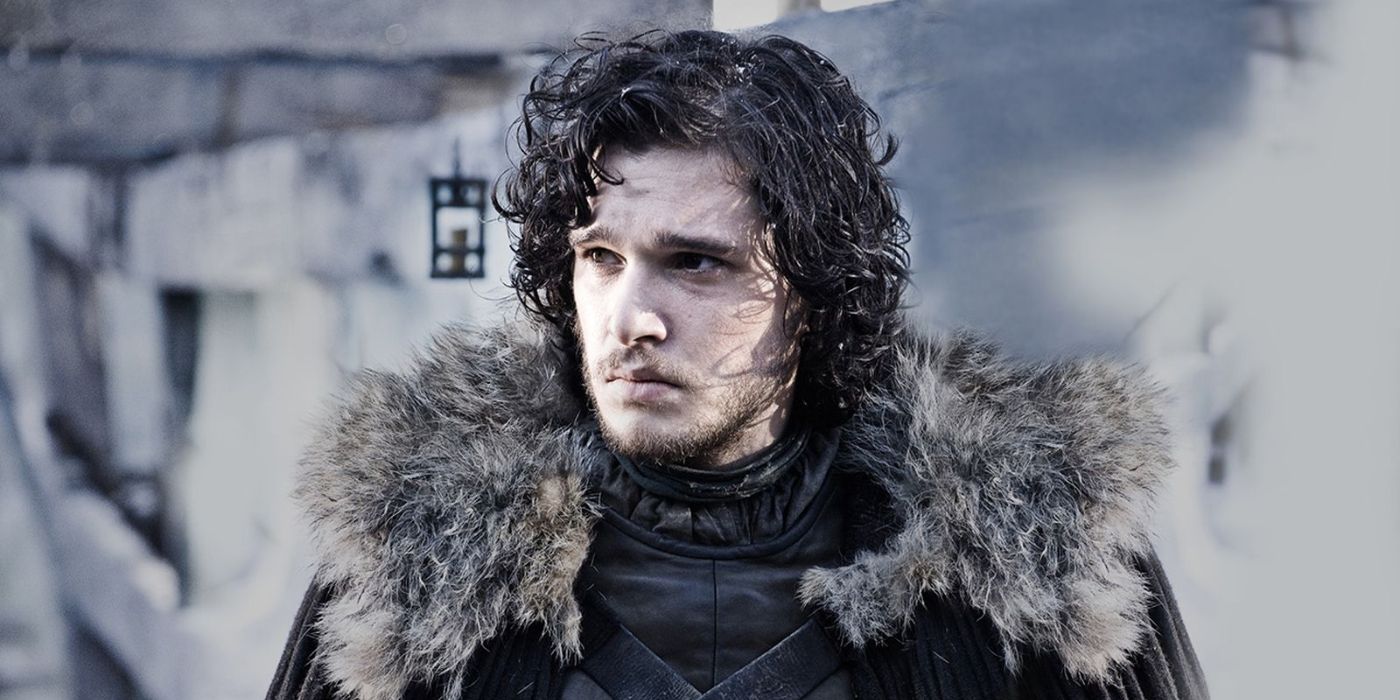
“Lord Snow” is primarily a character development episode, named for the contemptuous moniker given to Jon Snow (Kit Harrington) by his merciless Night’s Watch instructor. As Jon establishes himself as a standout recruit, Arya Stark (Maisie Williams) begins training as a sword fighter, and Daenerys Targaryen (Emilia Clarke) becomes more confident in her role as Khaleesi and informs her husband Khal Drogo (Jason Momoa) that she’s pregnant. The episode also introduces Lord Petyr “Littlefinger” Baelish (Aidan Gillen), who informs Catelyn Stark (Michelle Fairley) that the dagger used for an attempted assassination of her son Bran (Isaac Hempstead Wright) belongs to Tyrion Lannister (Peter Dinklage).
The third installment of Season 1 offers a break from the action and location establishment of the previous installments, allowing time to get to know some of the characters better. Jon’s experience at the wall demonstrates his dedication to the moral code he learned from Ned Stark (Sean Bean), while Catelyn shows that she’s no housewife and has her own connections and means of procuring information from around Westeros. It’s a welcome “rest and digest” episode within the flow of the season, but it doesn’t stand out as memorable on its own.
9“The Kingsroad”
Season 1, Episode 2
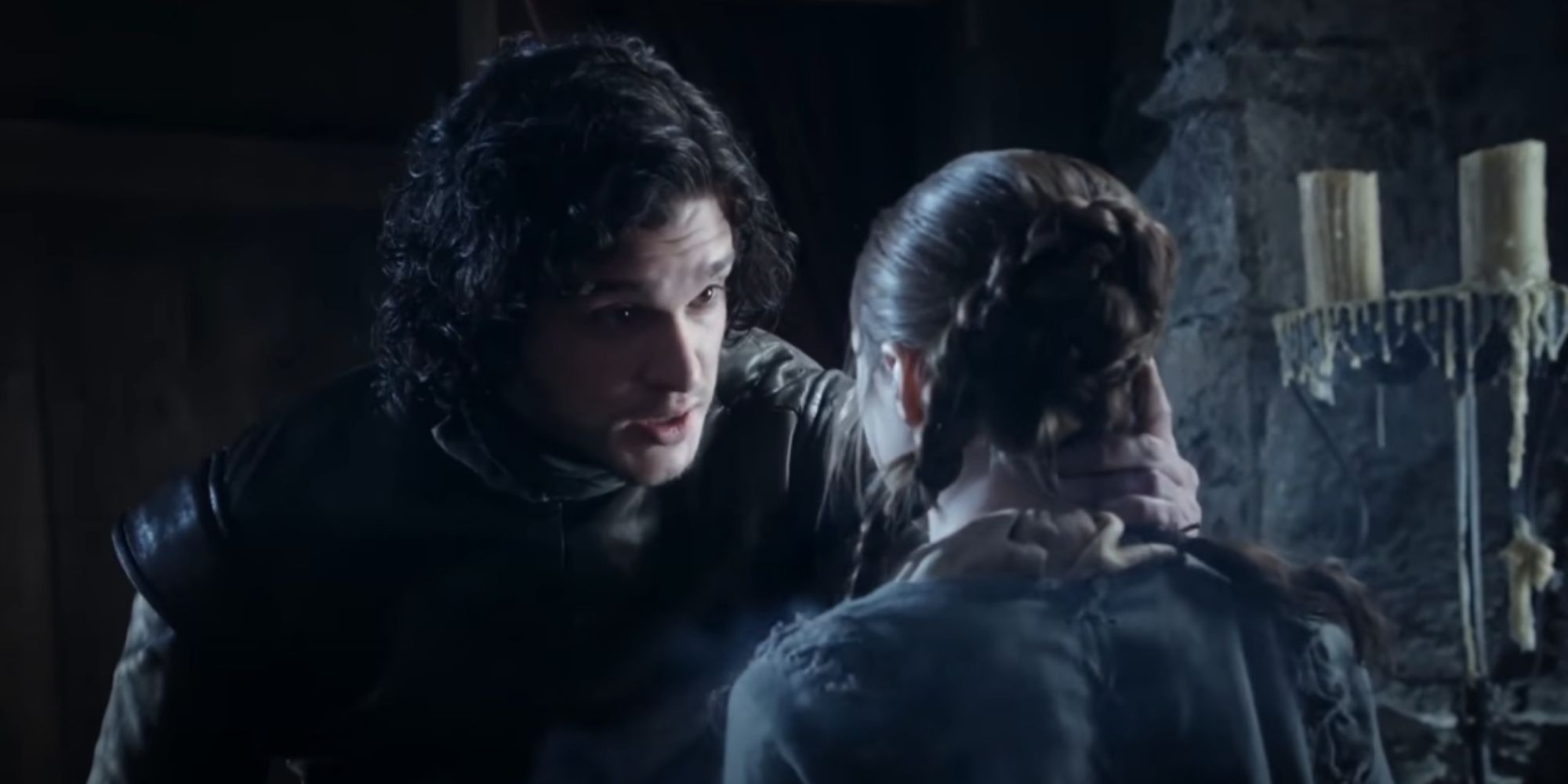
The second episode sees the Stark family parting ways, and neither the characters nor viewers who haven’t read the source material know that it’s the last time that many of them will ever see each other. Ned, along with his daughters Sansa (Sophie Turner) and Arya, heads south with the Baratheons to Westeros’ capital, King’s Landing, where he is to assume the post of Hand of the King. Meanwhile, Ned’s bastard son Jon Snow and Lannister black sheep Tyrion go north to The Wall, where Jon plans to join the Night’s Watch. Across the Narrow Sea, newly-wed Daenerys journeys to Vaes Dothrak, her new husband’s home.
Befitting its title, Ep isode 2 is akin to a road movie, with most of the storylines happening in transit. The lack of finality in the Starks’ goodbyes to each other prefaces Game of Thrones‘ singular ability to lure its viewers into a false sense of security. Though it has its share of shocking moments, “The Kingsroad” is most notable for setting the stage for what’s to come in unsuspecting ways.
8“Cripples, Bastards, and Broken Things”
Season 1, Episode 4

As its title suggests, Episode 4 spotlights the characters deemed societal outcasts or otherwise unfit for positions of prestige within Westeros. The installment introduces the lovable, overweight Night’s Watch recruit Samwell Tarly (John Bradley), a breath of fresh air whose lack of cunning and physical strength is as incongruous with the Night’s Watch as it is with the show itself. Tyrion is also featured heavily, and though he fashions a saddle for the paralyzed Bran Stark, he is ultimately ordered to be arrested by Catelyn for his attempted murder.
Episode 4 highlights Game of Thrones‘ awe-inspiring ability to add complexity and layers to characters that other shows might sideline. However, the episode is perhaps most memorable for activating the storyline that would become a primary engine for the series going forward. When Ned Stark looks into the sudden death of his predecessor and meets with one of the King’s bastards, he begins to suspect the bombshell revelation that Prince Joffrey (Jack Gleeson) was not fathered by King Robert Baratheon (Mark Addy) – but rather Queen Cersei’s (Lena Heady) brother Jaime (Nikolaj Coster-Waldau).
7“The Wolf and the Lion”
Season 1, Episode 5

This episode is most heavily focused on the fallout from Catelyn’s arrest of Tyrion. She brings him to the Vale, ruled by her sister Lysa Arryn (Kate Dickie), and the image of Lysa breastfeeding her 8-year-old son is one that many viewers wished they could scrub from their memories. While Tyrion is held in one of the Vale’s terrifying “Sky Cells,” news of his arrest reaches his brother Jaime in King’s Landing. He confronts Ned, who has just resigned from his post of Hand of the King after Robert orders the assassination of the newly pregnant Daenerys. A fight breaks out between Jaime, Ned, and their men, leaving Ned pinned at Jaime’s mercy. Jaime lets him live in exchange for Tyrion’s return.
The title of the episode alludes to the sigils of Houses Stark and Lannister and signifies that the growing tension between the families was careening toward an explosive confrontation. The episode contains a lot of exposition, specifically regarding the suspicious death of the previous Hand of the King, Lord Arryn. However, a defining strength of the episode is its focus, with nearly the entire installment contained within the Stark-Lannister conflict. Whereas other episodes ran the risk of spreading themselves too thin, the story of Episode 5 is given space to breathe.
6“A Golden Crown”
Season 1, Episode 6
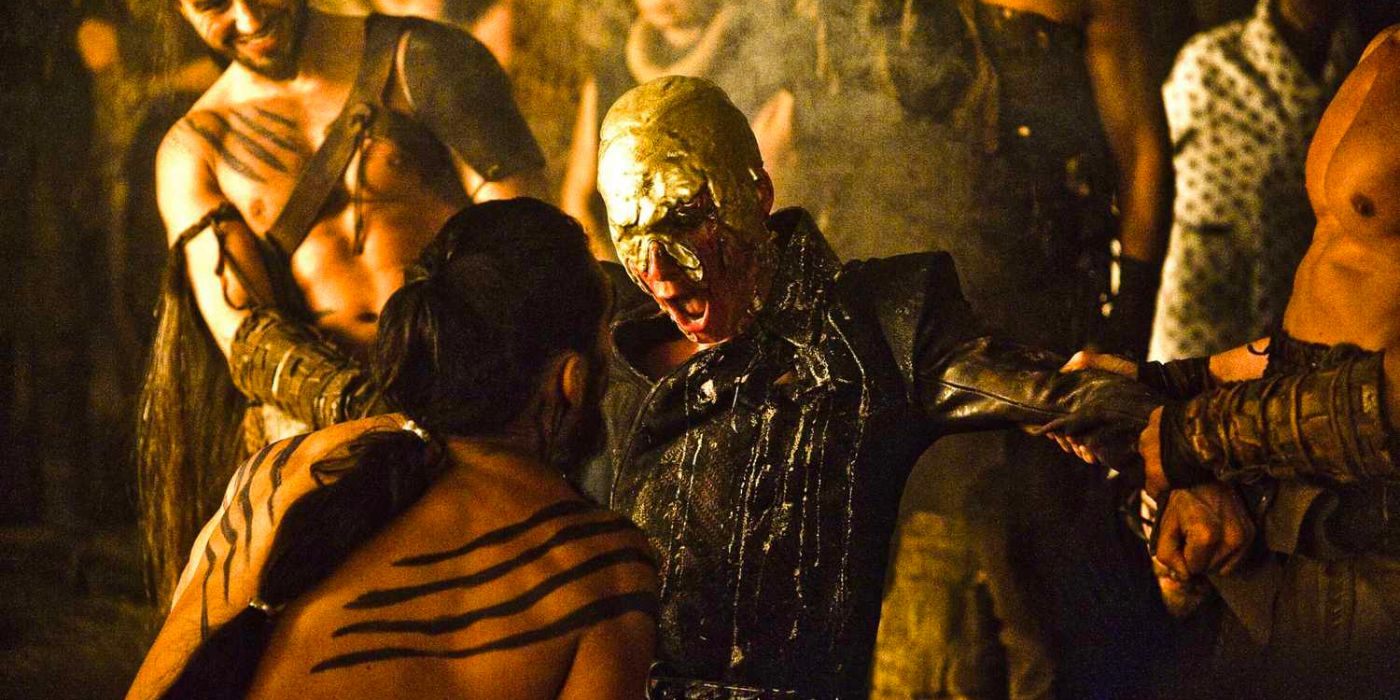
After a comprehensive investigation into the genetic consistency of King Robert’s bastard children, Ned finally comes to a dangerous, treasonous conclusion: Prince Joffrey is not Robert’s son. Tyrion wins his freedom via trial by combat in the Vale, but the real fireworks of the episode come from Vaes Dothrak. Daenerys wins further respect from the Dothraki by gamely participating in a ritual in which she eats a stallion’s raw heart. Growing increasingly resentful of her popularity and believing himself to be the rightful ruler of Westeros and the Dothraki, her petulant brother Viserys (Harry Lloyd) demands that Khal Drogo bestow upon him his “golden crown.” Khal Drogo obliges by pouring molten hot gold over Viserys’ head, resulting in his gruesome death.
Each storyline in “A Golden Crown” is propulsive, satisfying, and memorable; and the episode features shining performances, particularly by Peter Dinklage and Emilia Clarke. The theme of justice links the disparate storylines and highlights the vast spectrum of decorum and brutality in Westeros–a theme that would remain prominent throughout the entire series. The conclusion in Vaes Dothrak is as searing as Viserys’ crown and provides one of the standout moments of the season.
5“Winter is Coming”
Season 1, Episode 1

In Game of Thrones‘ pilot episode, named for the words of House Stark and the show’s ultimate foreshadowing, writers David Benioff and D.B. Weiss take on the monumental task of condensing the introduction of Westeros and its pantheon of characters into a single hour. Though the episode includes the glacial standoff between the Night’s Watch and undead White Walkers as well as the Dothraki and Houses Lannister, Baratheon, and Targaryen, the episode establishes the Starks of Winterfell, led by patriarch Ned Stark, as the primary protagonists.
It’s difficult to fathom how, amidst the staggering amount of character introductions, the tapestry of “Winter Is Coming” weaves so many story threads, including two betrothals (Sansa Stark to Joffrey Baratheon and Daenerys Targaryen to Khal Drogo), the execution of a Night’s Watch deserter, and a wedding gift foreshadowing the return of dragons. Even more baffling is the fact that all of these moments are overshadowed by the lingering images of the episode’s conclusion, which depicts young Bran Stark discovering the incestuous relationship between Queen Cersei and her brother Jamie, prompting the latter to shove the boy out of the tower window, all in the name of love. The episode provides more to digest than a Winterfell feast, but it only left viewers hungry for more.
4“The Pointy End”
Season 1, Episode 8

Episode 8 explores the impact of Ned Stark’s arrest by Cersei as it reverberates throughout the entire kingdom. Cersei forces Sansa to write to her older brother Robb, telling him to pledge fealty to Joffrey as the new king. Sansa does as told and begs for her father’s life, to which Joffrey offers mercy if Ned confesses to treason and accepts him as king. Upon receiving Sansa’s letter, Robb decides to declare war against the Lannisters, and the Starks and Lannisters begin strategically placing their armies around Westeros like a high-stakes game of Risk. Robb mobilizes his forces south, planning to face off against two separate Lannister battalions led by Jaime and house patriarch Tywin (Charles Dance). The episode also includes a disturbing scene of two slain Nights Watchmen being returned to the Wall, only to reanimate as wights.
Written by George R.R. Martin himself, this episode balances the big-picture movements of war with grounded character moments. With the battle lines literally drawn, the episode brings clarity to which houses will support which side across the sweeping landscape of Westeros, tying together many of the previously disparate story threads. Additionally, with Ned largely absent from the episode, the Stark children get their chance to shine, foreshadowing the future of the series following season 1.
3“You Win Or You Die”
Season 1, Episode 7

Though Episode 7 pays visits to other locations, the bulk of the episode is focused on Kings Landing, where the simmering tension between the Starks and Lannisters begins to boil. Having discovered that Joffrey is the son of Cersei’s brother Jaime, Ned confronts Cersei and advises her to flee with her children. He then finds Robert on a hunt with his men to share his discovery, only to learn that Robert has received a fatal injury from a boar. Upon Robert’s death, various factions scramble to elevate competing heirs to the throne, with Joffrey and Robert’s brothers Stannis and Renley all receiving backing. Ned returns to the court to order the City Watch to arrest Cersei, only for her to turn the tables and have Ned arrested instead.
Having Ned in checkmate, Cersei delivers perhaps the most infamous line of the season: “When you play the Game of Thrones, you win, or you die.” The line is essentially a thesis statement for the entire series, and its eponymous episode delivers on the premise. As the Lannisters decisively gain the upper hand on the Starks, the future of the main protagonist is officially called into question for the first time. This payoff of the carefully seeded conflict between the Starks and Lannisters is both satisfying and disquieting, and the episode raises the stakes for the entire series.
2“Fire and Blood”
Season 1, Episode 10
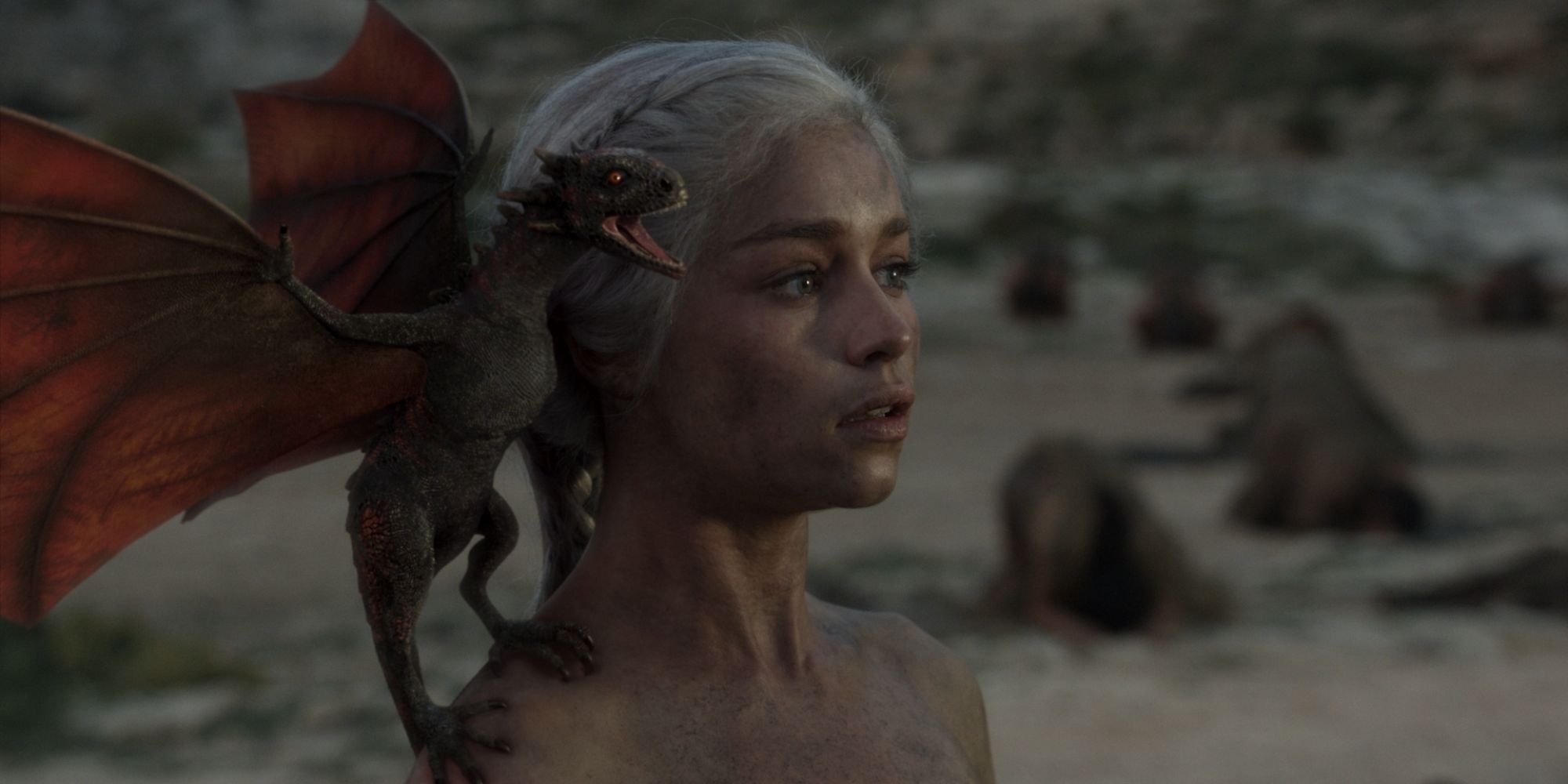
Following Ned Stark’s shocking execution, Sansa is held hostage by the Lannisters while Arya escapes King’s Landing disguised as a boy. Robb’s men declare him King in the North, and he vows to avenge his father’s death. But the episode really belongs to Daenerys, whose storyline was predominately secondary throughout the season. The blood magic that would purportedly save Khal Drogo’s life causes her son to be stillborn while Drogo remains technically alive but in a vegetative state. After smothering her husband, whom she knows would rather die than remain catatonic, Daenerys erects a funeral pyre containing Drogo, the witch who deceived her, and her three dragon eggs. She then walks into the inferno herself. When the Dothraki examine the pyre the next morning, they are shocked to see Daenerys emerge unscathed, along with three newly hatched dragons. The Dothraki bow to their Khaleesi, the Mother of Dragons.
The season 1 finale offers both a satisfying conclusion and a tantalizing tease about what will come next. The Starks’ and Lannisters’ feud is far from over, and with Robb capturing Jaime and Sansa being held in King’s Landing, each side retains a valuable bargaining chip. The division in Westeros is contrasted by the new cohesion in Essos, with Daenerys fully coming into her own as a character. The power and agency in Season 1 was largely held by the men, but in its final scene, Game of Thrones declares that the once-meek princess may just emerge as the series’ most formidable character.
1“Baelor”
Season 1, Episode 9
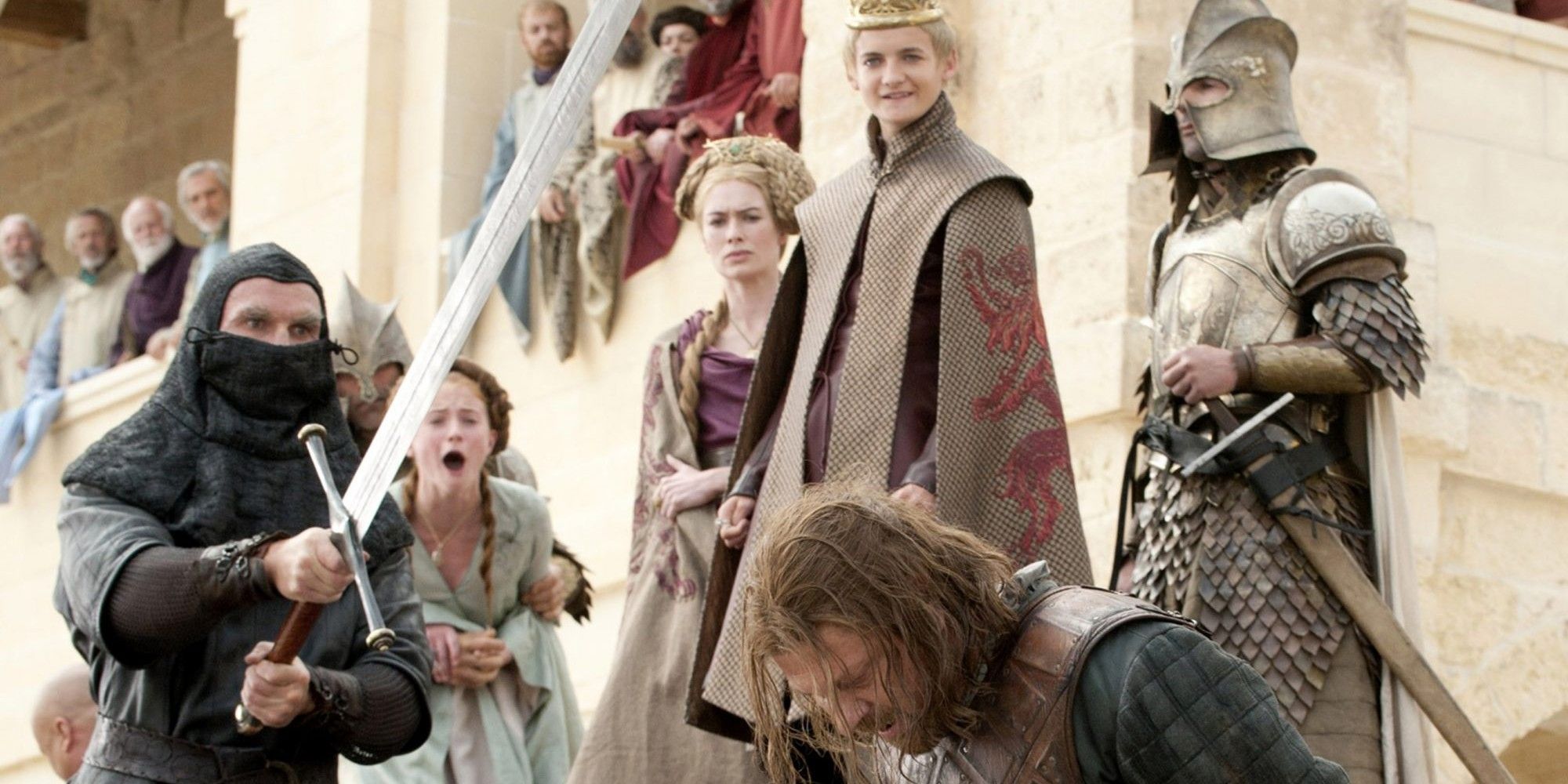
In Vaes Dothrak, Daenerys enlists blood magic to aid her dying husband and prematurely goes into labor. But the bulk of the episode takes place in Westeros, where Robb, having tricked Tywin into believing he’d be receiving the entirety of Robb’s army, ambushes Jaime’s battalion and captures the Kingslayer. In King’s Landing, Ned learns that Sansa’s life is also at stake, so he makes the required confession to treason and pledges loyalty to Joffrey. Going back on his word to Sansa, Joffrey has Ned executed regardless, beheading him in front of his daughters and a bloodthirsty crowd.
It’s perhaps the greatest and most memorable episode of the entire series besides “The Rains of Castamere” (Season 3, Episode 9). With this episode, Game of Thrones sets itself apart from even the most prestigious shows in television history. Whereas viewers can typically retain a certain amount of trust that a main protagonist will always find a way out, the death of Ned Stark shows that in Game of Thrones, no character is safe, and any previously conceived notions about television storytelling should be discarded. Like the kingdom of Westeros itself, viewers were left reeling and unsure of what the future would hold, but desperate to find out.
GAME OF THRONES is available to stream on MAX in the U.S.
